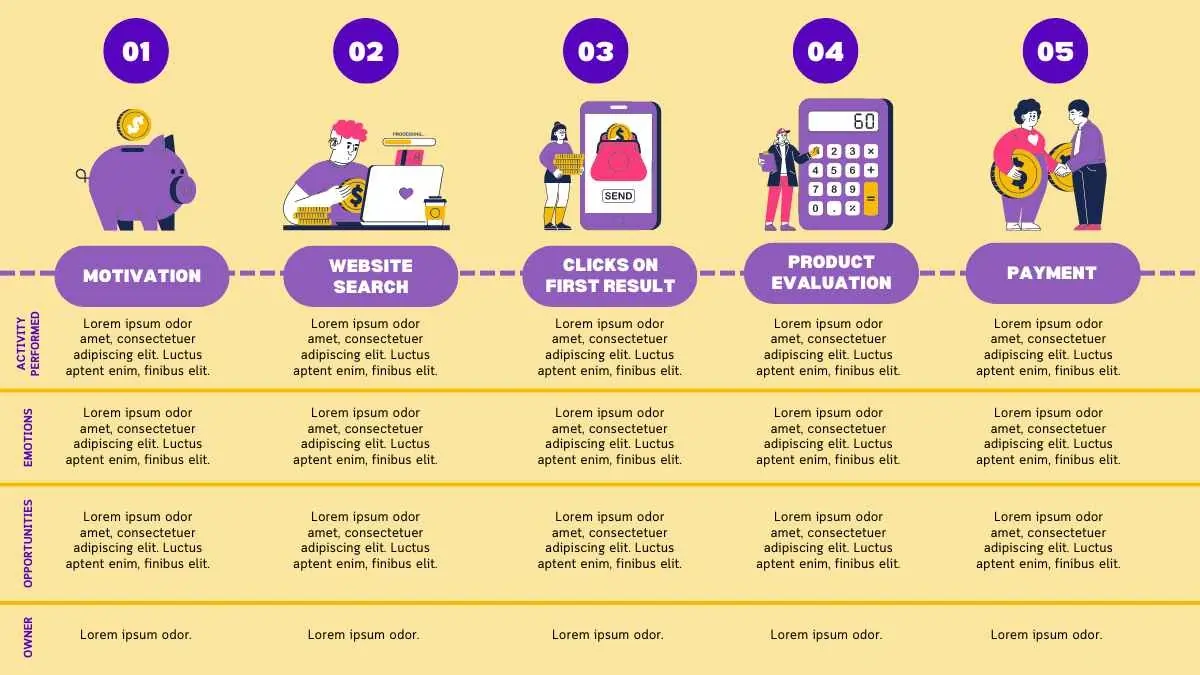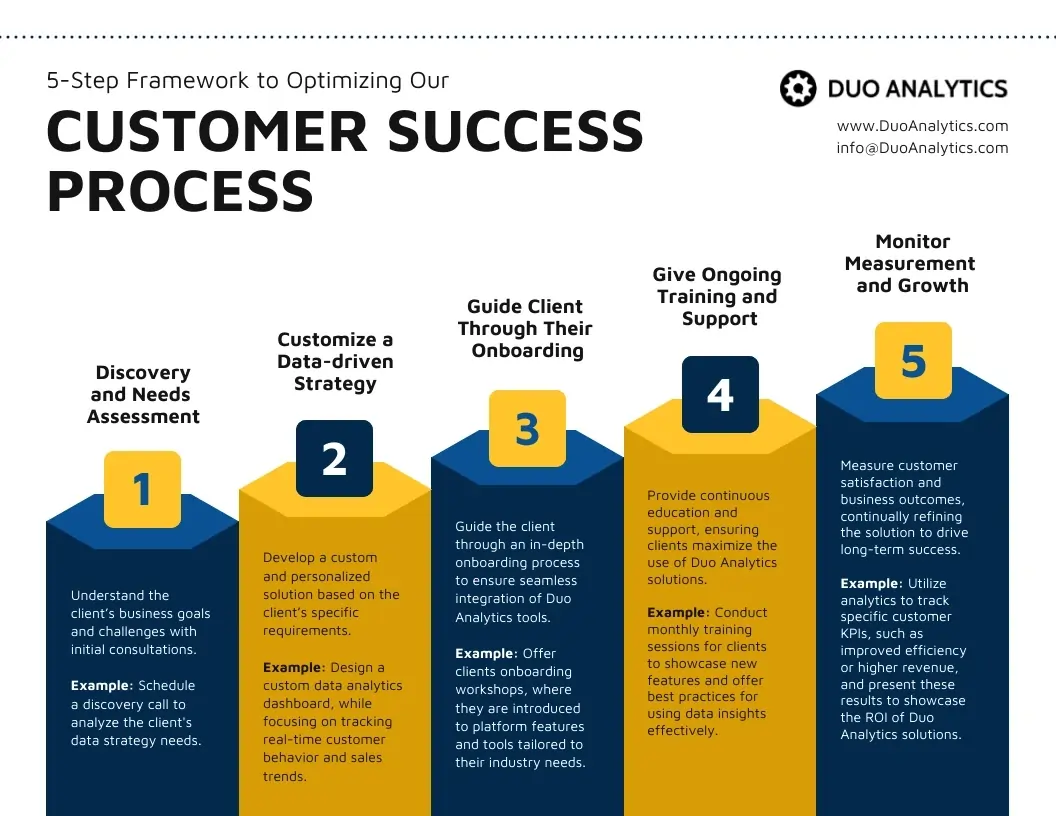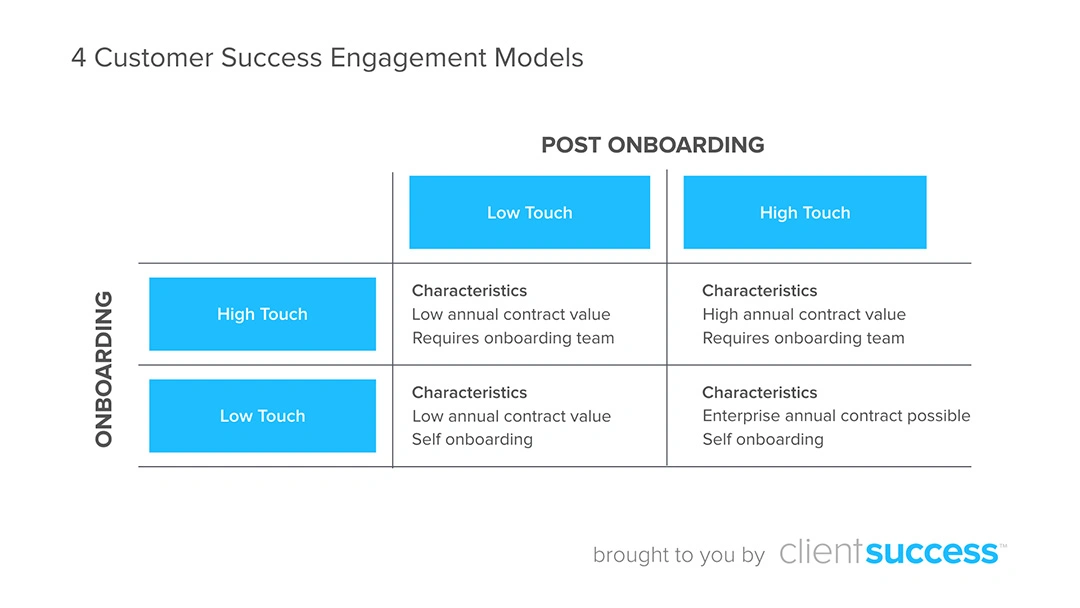You might be surprised to learn that 71% of B2B customers would switch providers because their relationships aren’t managed well. This eye-opening number shows why B2B client success matters so much to businesses today.
The math makes a strong case. Companies spend up to 20 times more to win new customers compared to keeping their current ones. This makes client retention strategies crucial for B2B companies’ bottom line. Research proves that businesses with strong customer bonds perform 30% better than their rivals in profits, sales, and retention.
Experience shows that good relationship management helps B2B companies become trusted partners rather than just another name on a vendor list. This partnership mindset protects revenue and opens doors to new possibilities. Companies that build deeper client connections discover new decision-makers, gain more internal champions, and stand out from competitors.
This piece will show you how to build a detailed client success system that turns customer relationships into steady revenue growth. You’ll learn proven ways to welcome new clients and keep them happy. We’ll share practical strategies that boost customer value and reduce dropouts. Let’s head over to what makes B2B client success a game-changer for your business.
What is B2B Client Success?
B2B client success helps business customers achieve their goals through products or services. Traditional customer service only reacts to problems, but B2B client success builds mutually beneficial alliances with customers to define and pursue goals that propel development.
How it is Different from B2C Success?
B2B client success has completely different relationship dynamics than B2C. B2B organizations deal with multiple stakeholders in a client company, and each stakeholder has unique needs and expectations. This makes customized solutions crucial since over 90% of major B2B players see quality customer experience as vital to meeting their goals.
B2B relationships stand out because they have:
- High-value, complex transactions that need specialized expertise
- Long sales cycles where multiple decision-makers take part
- Deep, customized account management
- Focus on building lasting partnerships instead of one-time sales
Research shows that 65% of B2B customers say their B2B experiences don’t match their consumer experiences. Yet 96% claim these experiences affect their decision to buy again. This gap gives businesses committed to client success a chance to stand out.
Why It Matters for Long-Term Growth?
Client success directly affects steady revenue growth. About 40% of SaaS revenue now comes from renewals and expansion. This makes investing in client success crucial for sustainable business growth.
Customer success teams spot expansion opportunities through their ongoing client relationships. They understand how clients use products and services, which helps them suggest upgrades before renewal dates.
Companies with the best customer success programs grow 2.5 times faster than others. This shows how much client success strategies can boost overall business performance.
Upsell and Cross-Sell Techniques in B2B
Smart B2B organizations use client success to drive revenue through strategic upselling and cross-selling. The chance of selling to existing customers is 60-70%, while it’s only 5-20% for new prospects.
Customer success managers (CSMs) find opportunities by:
- Watching usage patterns to suggest relevant upgrades
- Creating targeted account-based marketing campaigns for specific groups
- Telling success stories from similar customers who gained from extra features
- Letting customers try advanced features to see the value themselves
Cross-selling can boost a customer’s lifetime value by up to 14%. This makes it key to any complete B2B client success framework.
Mapping the B2B Client Journey

Image Source: SlidesCarnival
B2B client success starts when you understand how customers direct their relationship with your business. Modern B2B trips are “sprawling, multi-threaded, and mostly invisible”. A clear map of this trip helps identify ways to build stronger relationships and boost revenue growth.
Stages of the Customer Lifecycle
B2B customers move through several distinct phases, but not always in order. They often switch between stages as their needs change:
- Awareness – Prospects learn about your brand through advertising, events, SEO, or public relations. Buyers realize they need an external solution to solve a problem.
- Consideration – Your brand shows how it can fix the customer’s pain points. Buyers look at possible solutions and figure out which ones match their needs.
- Decision and Purchase – Customers assess options and choose one. Multiple stakeholders must agree on the final choice.
- Onboarding and Implementation – This key phase starts when customers begin using your product or service. Success at this stage shapes long-term retention.
- Support and Retention – Customer loyalty grows through good experiences. Your solution becomes part of their daily operations.
- Growth and Expansion – New chances for upselling and cross-selling boost customer lifetime value.
- Exit – Customers might stop buying for many reasons. Your handling of this process determines if they’ll return.
Touchpoints That Influence Engagement
Customers connect with your business through various touchpoints during these stages. These interactions shape their perception and experience:
- Digital Touchpoints: Websites, mobile apps, email marketing, online search results, social media, and customer portals. B2B buyers use social platforms more often now, with 65% buying through social media.
- Human Interactions: Sales meetings, account management calls, customer support channels, and in-person events.
- Content Touchpoints: Case studies, comparative blogs, testimonials, documentation, tutorials, and knowledge bases.
McKinsey’s research shows B2B journeys have grown complex. Customers now expect to use more than 10 channels, up from 4-5 in 2016. Different stakeholders in one account often interact differently—some watch webinars while others compare pricing pages.
Your client success framework becomes stronger when you map these touchpoints and understand what customers need at each stage.
Creating a Client Success Framework

Image Source: Venngage
A client success system forms the foundations of your B2B relationships that turn regular clients into loyal partners. Your team and customers need a systematic approach to guide them through a consistent experience that delivers measurable value.
Key Components of a Success Framework
The most effective B2B client success frameworks share five critical elements known by the acronym SCALE:
- Scalability: Design your framework to adapt as your customer base grows
- Customer Empowerment: Give clients the ability to help themselves through accessible interfaces and resources
- Aha Moments: Create high-touch interactions that showcase your product’s core value
- Lean Operations: Make use of information and feedback to refine the onboarding process
- Engagement: Build regular communication that uncovers growth opportunities
Your success framework needs clear, measurable objectives at its core. To name just one example, see how you could reduce onboarding time by specific days or boost feature adoption rates within accounts.
Aligning with Account Management Best Practices
B2B sales cycles are complex, so your success framework must line up with account management practices. Clear customer documentation creates a roadmap for client service, retention activities, and account expansion strategies.
Each account has unique characteristics, which makes customizing your approach crucial based on specific needs, goals, and challenges. Your offerings should match their desired outcomes while refining value propositions that address unique pain points.
Your framework should establish consistent reporting schedules focused on useful insights rather than vanity metrics. The first month requires weekly check-ins followed by regular data-driven reviews that build transparency and trust.
Integrating Client Onboarding Process
The onboarding process shapes your client success framework and determines the relationship’s future direction. Customers learn to use your solution during this phase and see its benefits for their operations.
A well-laid-out onboarding component should include:
- A welcome message and kickoff call to set expectations
- Creation of a playbook tailored to the client’s needs
- Module and task setup with appropriate training
- Preparation for implementation with customer support
- Milestone tracking and progress evaluation
These elements create a system that retains clients and naturally identifies expansion opportunities throughout the customer lifecycle when thoughtfully integrated into your framework.
Aligning Sales and Customer Success Teams
Sales and customer success teams create a unified approach to client relationships by breaking down silos. Research shows all but one of these customer success and sales leaders acknowledge most important room to improve their collaboration. This represents an untapped chance for revenue growth.
Maintaining Value Messaging Post-Sale
The shift from prospect to customer represents a vital moment where value messaging often breaks down. Customer Success Managers (CSMs) should join during the sales cycle instead of waiting until after closing to maintain continuity in value communication. Customers need constant reinforcement of their original buying vision throughout implementation.
Sales teams remain vital in the post-sale process. B2B marketers have unique chances to support these efforts. The sales team must capture customer Positive Business Outcomes (PBOs) during discovery and share them with CSMs. These details are the foundations for proving measurable value—the single most important factor that drives retention and expansion.
Collaborative Account Planning
B2B account planning helps teams adapt to changing customer priorities. Teams build credibility through targeted involvement and identify new revenue chances within existing accounts. Organizations encourage trust and uncover white space chances that might stay hidden by bringing sales and customer success together.
Empathy is a vital part of this shared planning process. Creative solutions emerge and needs receive better prediction when everyone’s viewpoint matters. Both customers and team members benefit from account strategies that stay available, relevant, and actionable.
Shared KPIs and Communication
Teams eliminate friction by arranging incentives between sales and customer success. Tension develops when sales focuses on bringing new customers while customer success prioritizes retention. Shared ownership of key metrics provides the solution:
- Churn rate: Sales teams make better prospect selections with shared responsibility
- Expansion revenue: Sales identifies accounts with “land and expand” potential
- Onboarding time: Both teams optimize the client experience together
- Net Revenue Retention (NRR): Joint ownership prevents sales from overselling to likely-to-churn customers
Both teams invest in long-term customer outcomes through shared KPIs and open communication channels. This alignment gives customers consistent experiences throughout their lifecycle and contributes to revenue growth and client success.
Choosing the Right Engagement Model

Image Source: ClientSuccess
The right engagement model is the life-blood of successful B2B client relationships. Your choice affects resource allocation, customer satisfaction, and revenue growth. A suitable model creates the perfect balance between individual-specific attention and flexible operations.
High-Touch Vs Low-Touch Vs Hybrid
The high-touch engagement model focuses on individual-specific interactions through dedicated customer success managers (CSMs). These managers build relationships through scheduled meetings, customized implementation plans, and strategic guidance. This approach leads to higher customer satisfaction and product usage. It also reduces time-to-value. In spite of that, each CSM can only manage a limited number of accounts effectively because of its resource-intensive nature.
Low-touch models depend on automation and self-service resources. The product handles most of the training through automated resources like help centers, chatbots, and in-app guidance. This method shines in flexibility, cuts operational costs, and lets users move at their own speed.
The hybrid engagement model takes the best from both approaches. Knowledge bases and chatbots handle everyday questions. CSMs step in for complex challenges. This balanced strategy builds personal connections without heavy resource needs. Your team can focus where they make the biggest difference.
When to Use Each Model?
Several significant factors should guide your engagement model choice. Your product’s complexity comes first – solutions with steep learning curves need high-touch support. User-friendly products work better with low-touch approaches.
Customer expectations matter just as much. Enterprise clients look for dedicated CSMs and white-glove experiences. They want regular check-ins and proactive problem-solving. SMBs and individual users prefer self-service options that prioritize speed and simplicity.
Money matters stay essential. High-touch models must generate enough revenue to cover dedicated personnel costs. Products with lower annual contract values do better with low-touch or hybrid models financially.
The most successful B2B organizations use a segmented approach. They provide high-touch service to strategic, high-value accounts and use more flexible models for others. This smart segmentation helps teams use resources efficiently while delivering appropriate support to all clients.
Proactive Strategies for Client Retention
B2B customer relationships depend heavily on client retention. Studies show that finding new customers gets pricey – about 5-25 times more expensive than keeping existing ones. These numbers make a strong case to develop strategies that keep clients happy and loyal.
Reducing B2b Churn Through Early Intervention
Your team needs to spot the warning signs before clients leave. Here are the red flags to watch:
- Less product usage or participation
- More support tickets or slower response times
- Lower Net Promoter Scores (NPS)
- Strange changes in customer behavior (like avoiding communication)
Research shows that 75% of users will leave within the first week if they don’t see value right away. A reliable measurement system helps catch these early warning signs. Start by tracking numbers like open support tickets and how fast they’re resolved. Then look at what customers actually say to avoid making wrong assumptions about why they leave.
Using Client Satisfaction Surveys Effectively
Strategic client satisfaction surveys give valuable insights. Net Promoter Score (NPS) surveys measure loyalty by asking customers if they’d recommend your product or service. These responses help group customers into promoters (9-10), passives (7-8), or detractors (0-6).
The surveys work best when you send them to everyone involved – not just your main contacts. Include economic buyers, program champions, end users, and technical staff. Companies that run multiple surveys each year see an 82% retention rate. That’s almost double the 44% rate of those who only survey once yearly.
Implementing Renewal Management Strategies
Start managing renewals 180 days before contracts end. This gives you time to talk about supporting client goals and explore growth opportunities.
Make renewals easy with options like automated renewals or self-service checkout. Send customized email reminders that highlight new features, loyalty rewards, or relevant discounts.
Clients who might leave could get discounts if they provide reviews, case studies, or referrals. This creates value for both sides while protecting your product’s market value.
Leveraging Technology and Data
Technology gives B2B organizations the ability to scale client success efforts and build customized relationships. Business relationships have become more complex, and the right tools are now fundamental to manage data and drive revenue growth.
Using Crm for Relationship Management in B2b
A strong CRM system serves as the foundation of successful B2B client relationships by bringing all customer interactions into one available hub. Teams can track every touchpoint throughout the customer’s journey with this complete view, from the first contact through onboarding and beyond. Modern B2B CRMs do more than store contact information—they boost the sales process by:
- Automatically capturing and scoring leads based on predefined criteria that indicate potential conversions
- Suggesting optimal times for client calls based on engagement patterns
- Helping teams make better decisions through centralized data access
- Triggering predefined actions customized to new customer integration
Companies that use CRM effectively see remarkable improvements in productivity and growth. Modern systems now use AI to understand customer behavior and identify clients who need attention.
Customer Feedback Utilization and Analytics
Customer feedback provides great insights about account health and ways to improve. Companies now understand that B2B feedback collection must go beyond primary contacts to include all stakeholders whose experiences count.
Successful feedback strategies combine “inner loop” and “outer loop” processes. Teams take action on individual feedback through the inner loop, while the outer loop creates organization-wide changes based on collective learning. Companies should study feedback to spot patterns and trends, then act quickly on insights. This shows customers their input matters.
Automation in Customer Success Management
Automation changes how B2B organizations deliver consistent experiences at scale. Companies can handle routine tasks through automated workflows like sending onboarding emails, scheduling meetings, and sharing support resources. Customer success managers can then focus on strategic work like customized outreach and consultations.
Predictive analytics helps teams spot troubled accounts early. Companies can develop scoring systems by tracking user behavior metrics like usage frequency and login activity to check customer health and prioritize help. This proactive approach stops small issues from becoming major problems that lead to customer loss.
Measuring and Optimizing Engagement
B2B organizations can identify growth opportunities and build stronger client relationships by measuring customer participation effectively. Companies can turn their existing accounts into reliable revenue sources through well-planned measurement strategies.
Tracking Customer Satisfaction and NPS
Net Promoter Score (NPS) remains a key indicator for B2B client success that measures how likely customers are to recommend your services. The calculation involves subtracting the percentage of detractors (scoring 0-6) from promoters (scoring 9-10). B2B Services industry showed an NPS of 39% in 2023. Companies that make use of information in their customer success programs see 93% better annual improvement in retention rates.
Identifying Upsell Opportunities
Customer behavior analysis reveals natural expansion possibilities. Here are some proven approaches:
- Match account size with NPS scores to find satisfied clients ready to grow
- Learn which behaviors associate with customers who upgrade to higher-tier products
- Monitor customers who reach consumption limits on current plans
- Study your most valuable product combinations in different customer segments
Using Data to Improve Client Success Programs
Information-driven customer success shapes revenue generation in many ways. Companies that create individual-specific interactions based on data see 40% higher year-over-year revenue growth. These organizations also reduce service costs 5.1x more annually compared to competitors without data-focused approaches. Your customer data can power your success engine and help you develop applicable information to enhance client relationships continuously.
Driving Revenue Through Client Success
Revenue growth from client relationships needs strategic methods that build on 5-year old trust. Most successful growth companies generate 80% of their value by discovering new revenue from existing customers in their core business.
Upsell and Cross-Sell Techniques In B2B
The numbers tell a compelling story—companies have a 60-70% chance of selling to existing customers, but only 5-20% to new prospects. These techniques work best:
- Showing gated features from higher tiers within your product
- Using reverse trials that give temporary access to premium features
- Creating predictive cohorts to identify customers ready for expansion
- Implementing product-qualified account (PQA) triggers for sales engagement
Customer Advocacy Programs and Referrals
Customer advocacy turns satisfied clients into vocal supporters. Modern technology helps scale advocate sourcing, management, and activation in high-performing advocacy programs. These programs let advocates spread success stories while getting unique opportunities that raise their personal brands. Referral-driven deals show lower churn rates and better ROI than outbound efforts.
Maximizing Customer Lifetime Value
Customer lifetime value (CLV) strategies pave the way to lasting success. Upselling and cross-selling can boost a customer’s lifetime value by 14%. This makes expansion opportunities the quickest path to revenue growth. Data analytics helps companies learn about customer behavior and make smart decisions that improve CLV effectively.
Conclusion
A powerful B2B client success strategy serves as the foundation for steady revenue growth. This piece explores how strategic client relationships surpass basic customer service. These relationships evolve into genuine business partnerships that accelerate mutual success.
B2B relationships differ significantly from B2C interactions. Of course, managing multiple stakeholders within each account needs a thoughtful, individual-specific approach. Companies with exceptional customer involvement outperform their competitors by at least 30% across key metrics.
Client experience mapping shows crucial touchpoints where relationships grow stronger or weaker. Your success framework should match these touchpoints while including expandable processes that adapt to different client needs. Each account needs unique attention, yet the right involvement model—whether high-touch, low-touch, or hybrid—helps balance personalization with operational efficiency.
Your client experience becomes uninterrupted when sales and customer success teams work together. Shared KPIs and collaborative account planning ensure everyone focuses on client retention, satisfaction, and account expansion.
Data becomes your most valuable asset to drive client success. You can spot expansion opportunities early by collecting and analyzing customer feedback, tracking satisfaction metrics, and using predictive analytics. Selling to existing customers has a 60-70% success rate compared to just 5-20% for new prospects.
Smart retention strategies, customer advocacy programs, and strategic upsell techniques turn your client base into a reliable revenue engine. Companies that excel at client success grow 2.5 times faster than those without well-laid-out programs.
Client success means more than good customer service—it’s a complete business strategy that delivers measurable results. These approaches will transform long-term relationships into steady revenue growth while building partnerships that withstand market changes and competitive pressures.
FAQs
Q1. How Does Customer Success Contribute to Revenue Growth in B2B?
Customer success teams drive revenue growth by building strong relationships with existing clients, identifying upsell and cross-sell opportunities, reducing churn, and generating referrals. By focusing on client outcomes and satisfaction, they increase the likelihood of renewals and expansions, which can be 60-70% more probable than acquiring new customers.
Q2. What Are Effective Strategies for Increasing Revenue from Existing B2B Customers?
Key strategies include analyzing customer data to identify expansion opportunities, maintaining regular follow-ups, offering tiered pricing and upgrades, training teams in cross-selling and upselling techniques, and providing complementary products or services. Additionally, implementing customer advocacy programs can turn satisfied clients into vocal supporters, driving referrals and new business.
Q3. How Can B2B Companies Measure the Success of Their Client Relationships?
B2B companies can measure client relationship success through various metrics, including total sales, new customer acquisition rate, net profit margin, lead response time, sales cycle length, and Net Promoter Score (NPS). Tracking customer satisfaction, product usage, and engagement levels also provides valuable insights into the health of client relationships.
Q4. What Role Does Technology Play in Enhancing B2b Client Success?
Technology is crucial in scaling client success efforts while maintaining personalized relationships. CRM systems centralize customer interactions, enabling teams to track touchpoints throughout the customer lifecycle. Automation handles repetitive tasks, freeing up customer success managers for strategic activities. Predictive analytics help identify at-risk accounts early, allowing for proactive intervention.
Q5. How Can B2b Organizations Align Sales and Customer Success Teams for Better Results?
Aligning sales and customer success teams involves maintaining consistent value messaging post-sale, introducing customer success managers during the sales cycle, and implementing collaborative account planning. Establishing shared KPIs, such as churn rate and expansion revenue, ensures both teams are invested in long-term customer outcomes. Open communication channels and regular joint meetings also foster better alignment and customer experiences.
About The Author
Get A Free 1 Hour Consultation
I can help you fix your digital marketing strategy that powers your business growth.
No strings attached. No commitments required. No sales pitch from my side about our services. I will give you a patient hearing, understand your business, understand your business growth challenge and suggest various growth strategies you can implement for your business. I will talk about my service offerings, only if you want me to. Not otherwise.


